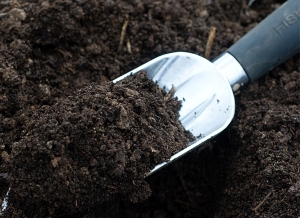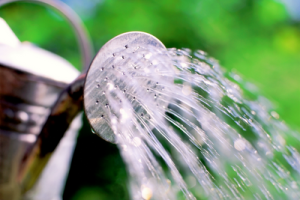As promised, here is the first installment on my gardening, eco, everything green series I am doing in preparation for a sunnier, healthier, cheaper summer! As I am a beginner gardener, I can’t really say anything I learn or already know is the full proof way of doing it. I know what I do from watching my mom and grandmother (mommom) and what I’ve learned has come from hours of scouring the internet. Hopefully, when the weather is warmer I can post the updates of my garden and how these little tips and tricks have actually worked for a real-life novice. For now, if anyone has any advice of thinks I’m sharing something that is too good to be true don’t hesitate to leave a comment about your own experience! So, now that we’ve all taken our grain of salt – let’s move ahead!
Planting
The first step in planning your garden is to decide what you want to grow! Sounds pretty simple, right? Thankfully where we live isn’t the arctic so we’ve got a pretty wide range of possible plants. If you live somewhere with any type of “extreme” climate (arid, moist, frigid, depths of hell hot, etc.) and a shortened growing season then you might want to look up what vegetables are best for your area. Here is a handy, dandy link from Mother Earth News to help you plan best for your area. When you subscribe for free they will send you timely reminders of when you should plant your crops.
Also, let me not forget while I am under the heading of what to plant. In deciding which vegetables you want to grow you should also choose if you want to grow from seed or a starter plant. This year we are using starter plants because they can go straight from the store to our garden. It isn’t the most sustainable option but it is less labor intensive and we won’t have to worry about mold and fungus on our seedlings. My long term goal is to store the seeds from this year’s plants to start from seed next year. I’ll talk about starting from seed in more detail in another post.
For my first garden I am going with some staples from my childhood:
Roma Tomatoes (for sauce & stewed tomatoes)
Green Zucchini
Yellow Squash
Green Bell Peppers
Red Bell Peppers
Green Beans
When to plant
The first thing I’ve learned about starting a garden is that there are specific times during the year to plant depending on where you live. I’m not sure when my mom planted when I was growing up. Definitely in the spring but she never bothered looking up her zone or anything. However, I grew up in fertile and warm South Jersey, the garden state, and am currently residing in North Eastern PA, known for its cold weather and coal mining. It isn’t as if I’ve moved from Florida to Alaska but the summers are a bit milder, the winters are a tad harsher and things which easily fair an outdoor climate in Jersey all year need to be housed during a PA winter. (Like the sickly basil plant I was given last summer, nursed and tended through the fall and let die before December.)
So because I want to be as prepared as possible, like a good little gardener I looked up my zone. Here is a link where you can look up your zone and a nifty table that describes when specific veggies should be planted. Unlike the Mother Earth News link this requires no subscriptions but will not send you email reminders – so the choice is yours.
Here are the dates suggested for our veggies:
Tomatoes: May-June
Zucchini/Squash: Early May
Bell Peppers: May-June
Green Beans: June-July
Where to plant
If you don’t have the best outdoor spot to till up some dirt then there are a variety of other options for starting your garden. Admittedly, we probably could have sustained a small herb garden in our previous apartment if we were willing to shuffle it around to which ever of our few windows was receiving sunlight at the time. But if you’ve got sun – that’s all you need! A small balcony, deep window ledge, or strategically placed end table can set you up nicely for some small scale container gardening! For this section of my post I looked up a few more articles on container gardens and was flooded with results! So much so that to fully appreciate the simplicity and ease of apartment and alternative gardening I’ll have to give it its own post. For now I’ll leave you this sneak peak:
After you’ve decided whether you are having an outdoor/indoor, ground or container garden, it is important to know how much sun your plants like. When you purchase the seeds or starting plants they should be labeled with the kind of light that plant needs. For example, there are five different types of sun exposure:
Full shade: Look for this on the north sides of buildings and walls or under trees with low branches and dense leaves. No direct sunlight reaches the ground
Partial shade: Find this in areas that get direct morning sun (on the east side of buildings) or afternoon sun (on the west side of structures) but none at midday, from about 10:00 to 2:00 p.m.
Light shade: Look for this under trees with high branches and sparse foliage.
Partial sun: Same as partial shade but these plants also tolerate midday sun.
Full sun: These places receive full sunlight for at least 6 hours or more each day including midday.
Most vegetables require that 6 hours of tanning but some leaf and root vegetables, like lettuce, peas, carrots, kale, and swiss chard (yum!), will tolerate part sun or light shade. For my garden, which is full of fruit producing vegetables, we will be needing full sun!
Along with taking note of how much light your vegetables should and will get, you also need to tend to your soil. It’s good to know whether your vegetables prefer acidic or alkaline soil. If you have a small plot and two vegetables that can’t agree on the best dirt try planting one in the ground and another in a raised planter box. If you want to get all gadgety, Lowe’s sells a soil testing meter which will tell you the moisture, light, and PH in your garden for only $8.98.
Now, I might have looked up my own special little planting zone but buying gadgets like this is where I draw the line. If half of my veggies want acidic and half want alkaline then I’ll split them down the middle and use two different types of compost (which I CAN NOT wait!!!!! to talk about in a future post!) to give them what they want.
Key: Neutral soil = 6.5, higher is alkaline, lower is acidic
In our garden all the vegetables are tolerant of approximately the same range.
Tomatoes – neutral or near-neutral soil
Zucchini – neutral to slightly alkaline
Peppers – neutral to slightly acidic
Green Beans – neutral or near-neutral
Companion Planting
While we are discussing where to plant, another great trick is picking a friendly neighbor for your veggies! Much like the human world, some veggies are better friends than others and make great companion plants! For example, tomatoes and basil are besties because basil helps to repel spider mites and aphids and attracts bees! Look forward to my post, Companion Planting: Match-making and Marigolds for more information on the subject.
For the singles in our garden: Do’s
Tomatoes pair well with: basil and marigolds
Peppers with: tomatoes, basil, and onions
Green Beans with: lavender
Don’ts
Tomatoes do not do well with: potatoes or the cabbage family
Peppers with: beans, kale, cabbage family
Green Beans: onions, garlic, fennel
How much to plant
I’m not sure why anyone would want to plant a garden that couldn’t provide enough food for their family for at least a season. If you don’t have storage space, can’t can, or freeze then fresh vegetables and herbs in the summer are always welcome gifts for friends and neighbors. In the summer there is almost always a basket full of vegetables at church, free to anyone who wants them.
When determining how many plants to plant it is important to think about how long you want them to feed you. Will you be canning or freezing produce to use all year? How much space do you have? And, how much time do you have, because you don’t want to become overwhelmed with an overgrown garden. So determining how many seedlings, sprouts, vines, and bushes is a question of balancing your goals with ability. Here is a helpful chart with suggestions for how much to plant if you are planning to feed a family for one year from the garden.
Using the food for a year chart I should plant:
20 tomato plants
10 Squash
10 Zucchini
6-10 Pepper plants
4-8 Green Beans
…… Ugh, I don’t think so. 1. I absolutely don’t have the space. and 2. That is a lot to can and freeze and my apartment is very small with an already full freezer. Our goal is to eat fresh during the season and freeze/can what we can keep. Also, I want to start out small so I don’t get overwhelmed. Right now I estimate we will need 3 tomato plants, 2 green peppers, 2 red peppers, 2 squash, 2 zucchini, and 3 green beans.
Last but not least, Watering
Unlike sunshine and soil, watering is something you can have a bit more control over. If you want total control over how much water your plants get then I recommend building a green house. Otherwise, pay attention to the rain water they receive and water them accordingly. Through rain or the hose, your veggies need an inch of water per week. According to Burpee, “Thoroughly soaking the soil with infrequent watering is better than shallow regular watering. Deep soaking encourages plant roots to reach deep into the soil while shallow watering keeps roots close to the surface, leaving the plants susceptible to drought.” But when they say soaking they do not mean frequently drowning your plants which can also cause damage to the plant and crops. Instead, let’s say it isn’t going to rain this week so you should soak your garden twice a week about 1/2 in. each time.
In addition, some plants enjoy a good sprinkling all over to keep cool while others need their fruit and leaves to stay dry to stave off mold. For example, tomatoes should be watered at the roots. I had an excellent article with more examples but have lost it in the dregs of internet history. As a rule of thumb, leafy greens like to be sprinkled – especially if they are in direct sun while fruit bearing vegetables should be watered at the roots.
So I hope you’ve enjoyed the first installment in my series and will keep reading!! Coming up in Starting a Garden, I hope to write more about companion planting, composting, alternative gardens, fertilizing, pest control, and tips for growing my specific veggies!
Not to mention all the other fabulous, eco-friendly projects I’m pursuing!






